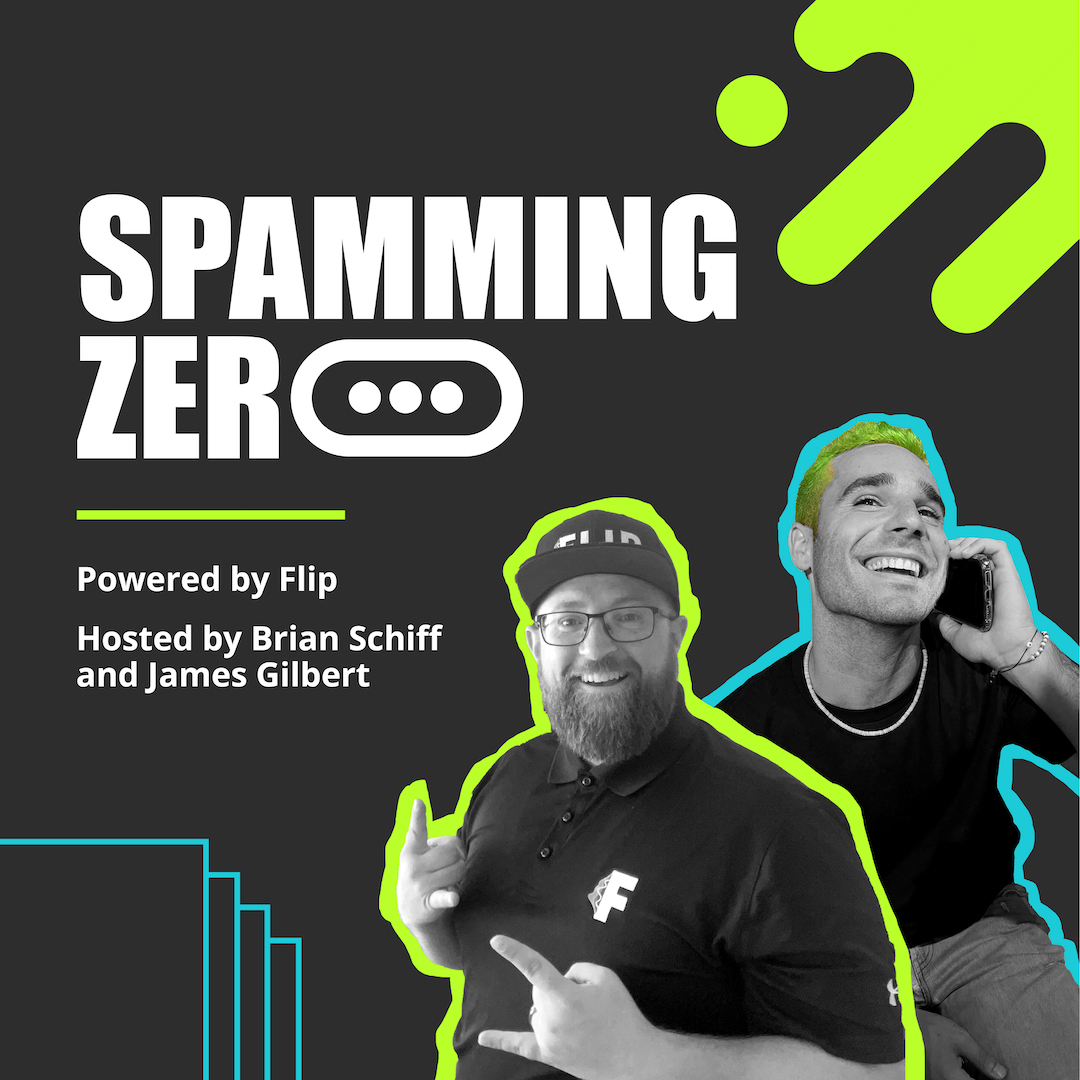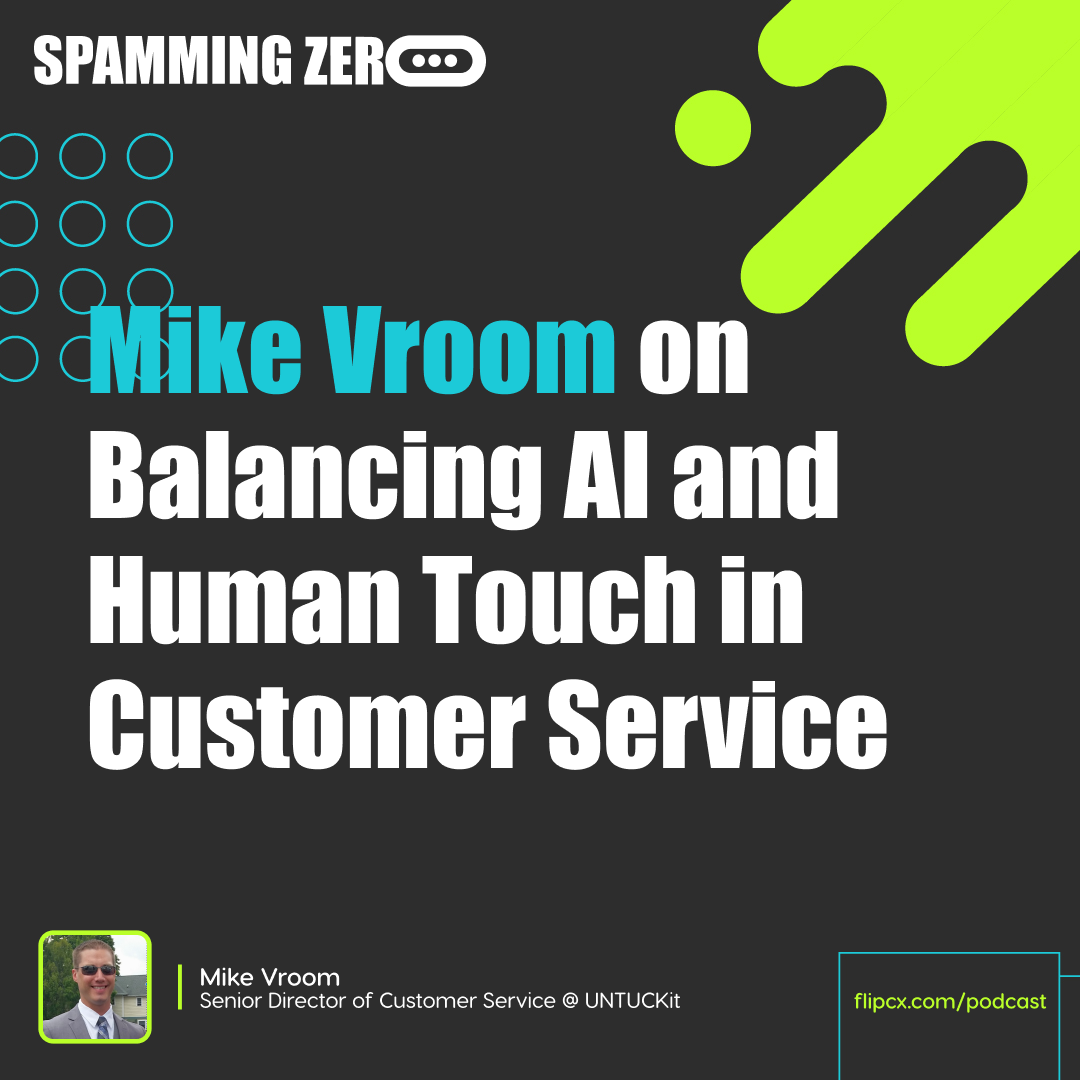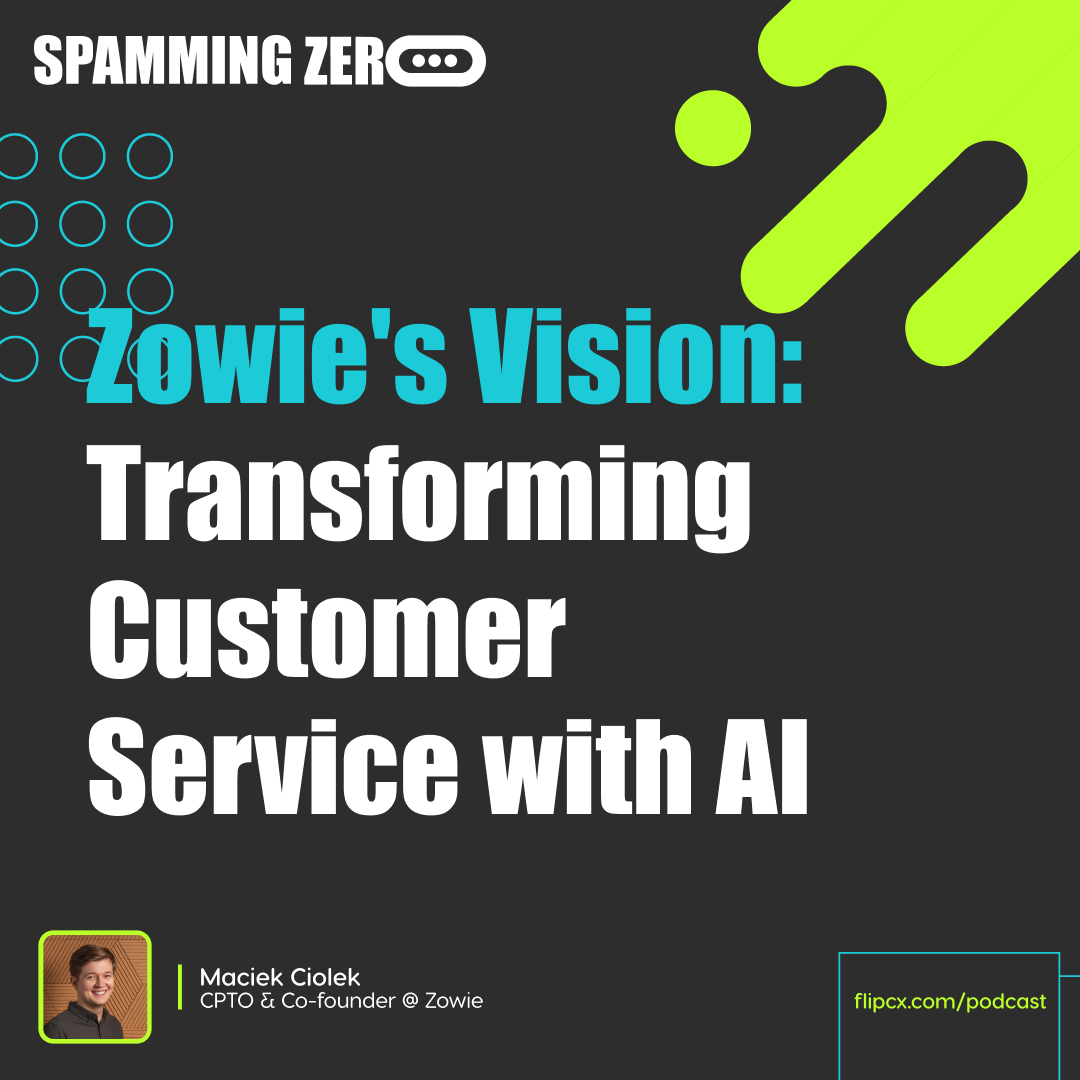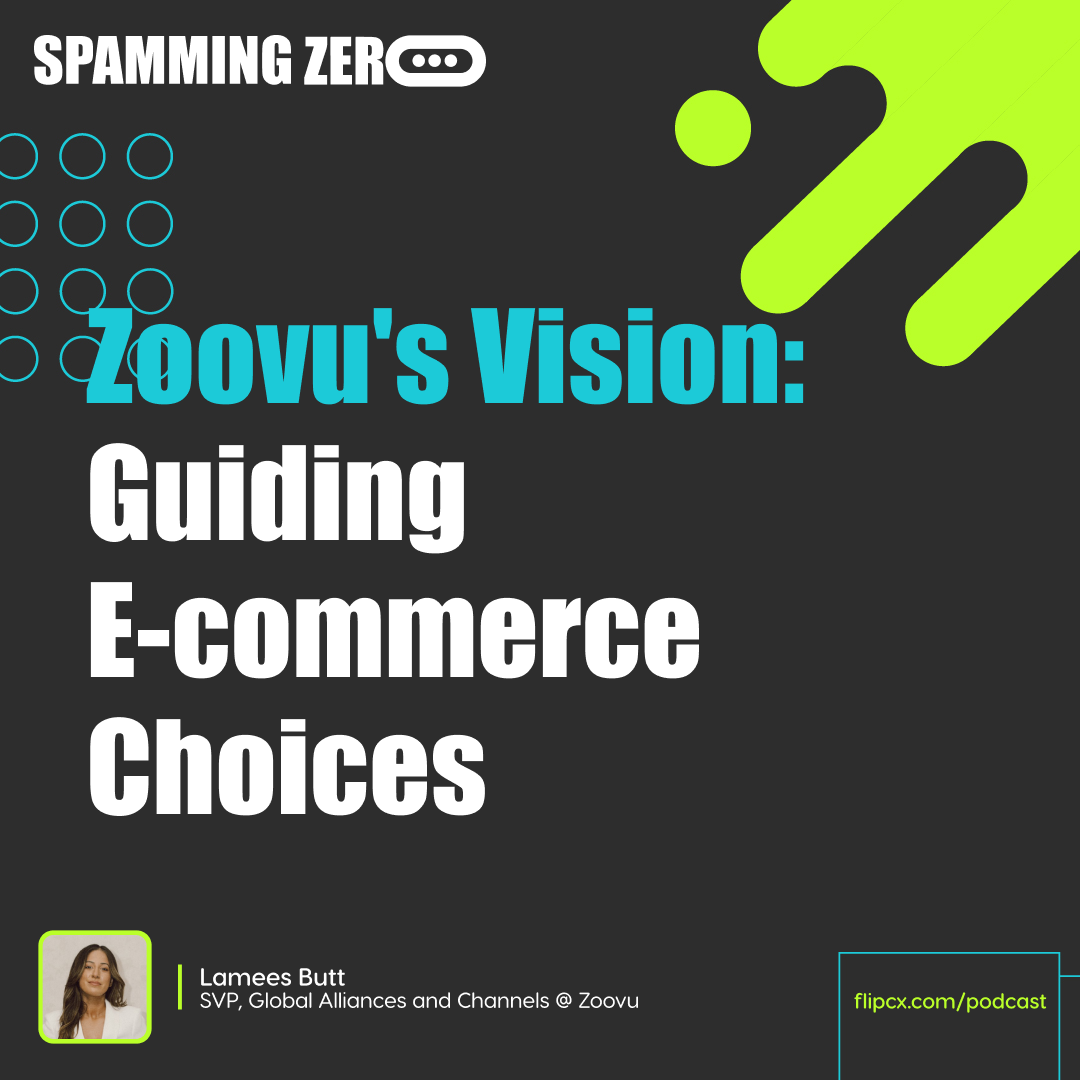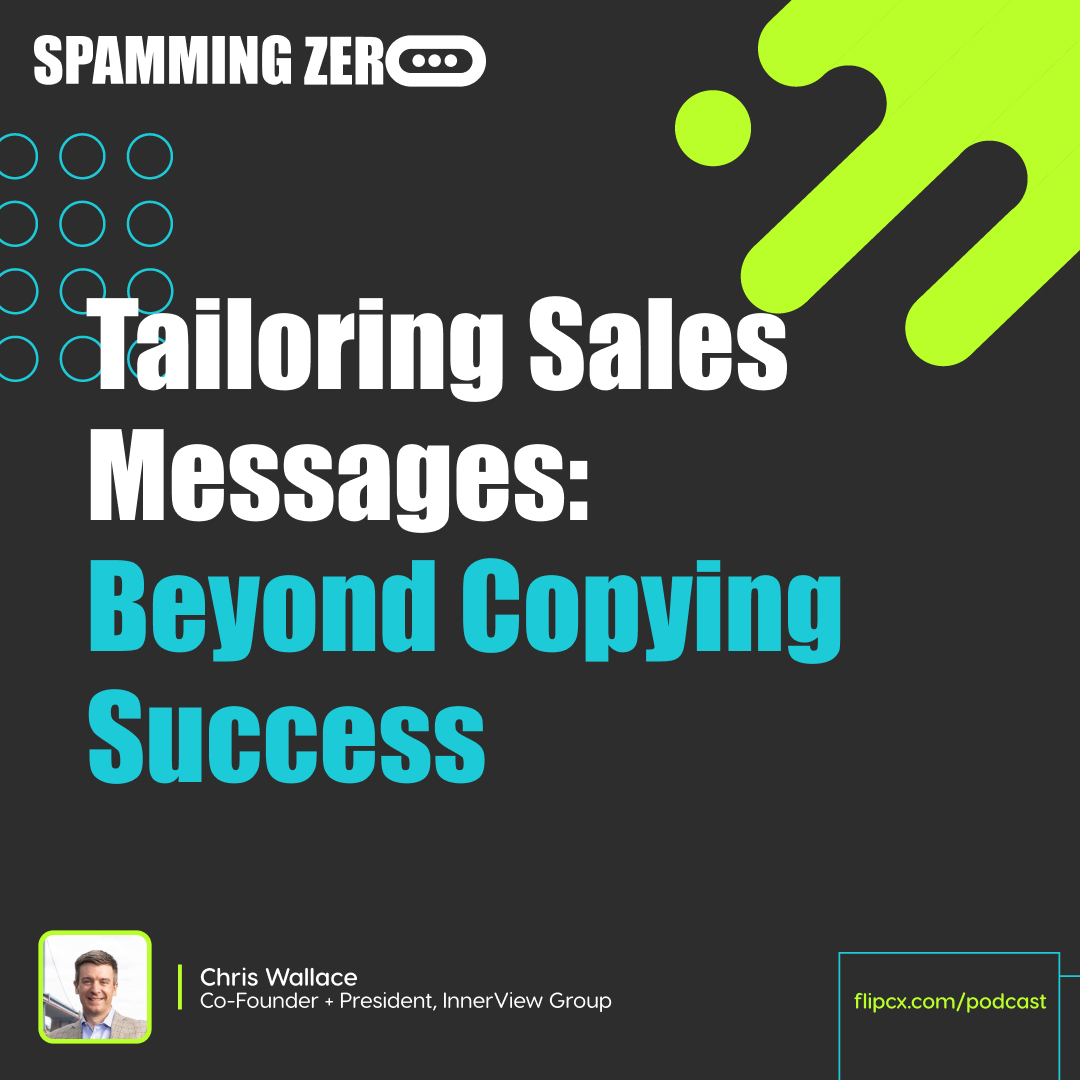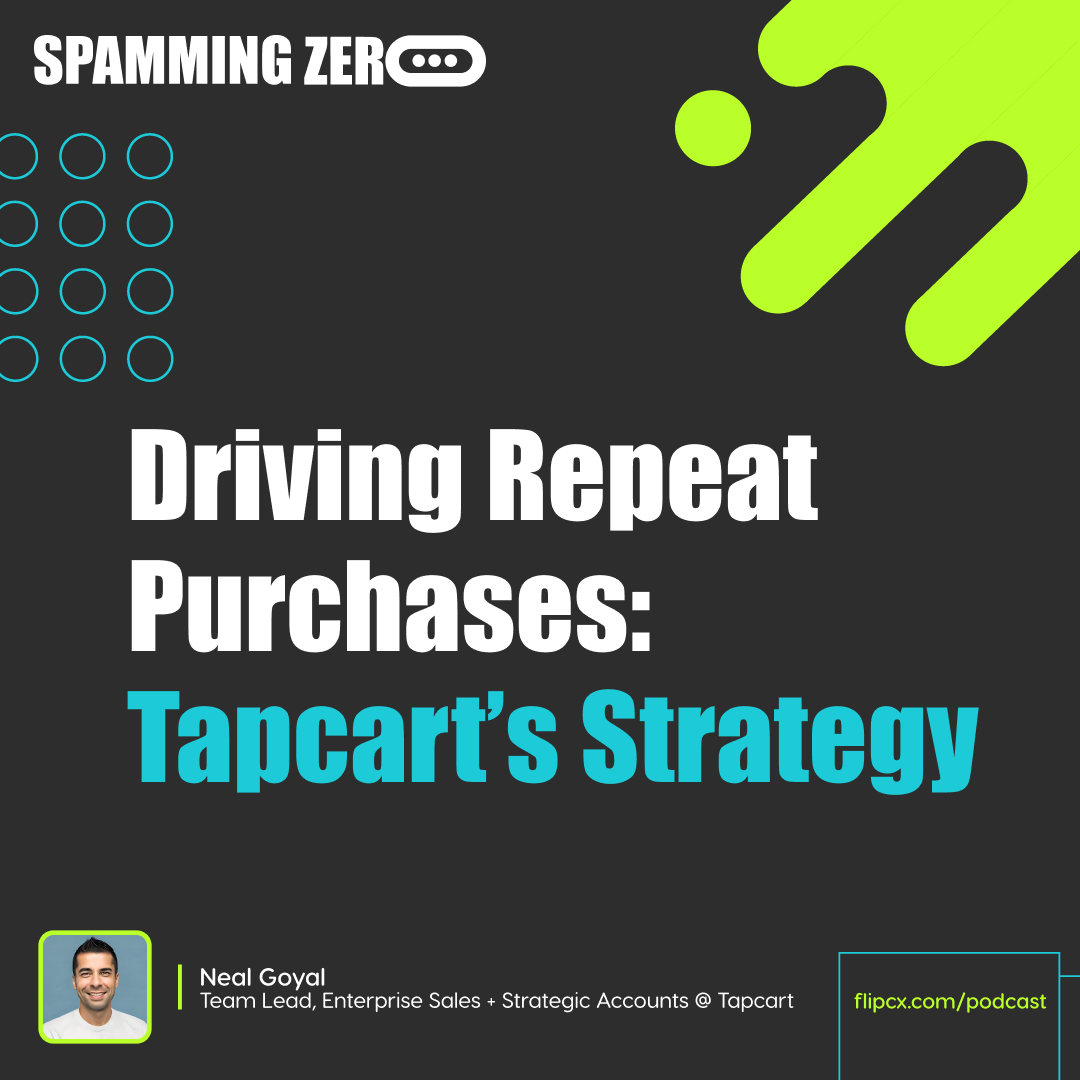Episode 2: Why One-Touch Resolution Is Completely Flawed with Ben Segal at Pair Eyewear
- 0.5
- 1
- 1.25
- 1.5
- 1.75
- 2
Brian: I'm Brian.
James: And I'm James, and this-
Brian: Spamming Zero.
James: ...Welcome to our very first episode with a guest, Spamming Zero. Folks, we're so excited to do this podcast, because we are going to hopefully make you laugh. Maybe even make you cry. I don't know. It's going to be crazy. But we are excited because we're going to be joined today by Ben Segal, who is the director of customer experience at Pair Eyewear. Happens to be a customer of Red Route too, which we're super excited about. He has a decade of experience in sports entertainment. We're going to dive into that. Four and a half years, took a team from 12 to 400, before it was acquired by Nestle, which is awesome. He scaled the team at Pair Eyewear currently from 20 to 175. Today, we're going to be talking about why your One Touch Resolution in customer service is completely flawed. Welcome to the show, Ben.
Ben Segal: Thanks so much for having me. Yeah. Super excited to be here today.
James: Brian, my CEO and co- host, how you feeling about your first episode?
Brian: I'm feeling good. I'm feeling good. I had a little pump up music before we got started. Was getting my head in the game, and yeah. Excited for the discussion.
James: Wait, what was the pump up music?
Ben Segal: Great question.
Brian: Ooh. That is a great question. So during our fundraise last year, one of my good friends got me into the artist Russ. So I got a couple of Russ songs that are now my, when I got to get in my zone, I just, I get them on, just need a couple minutes, and then I'm locked in. So that was it.
Ben Segal: Love to hear it.
James: I thought you were going to say,"I was listening to Timber by...
Brian: Yeah. That serves a different sort of role, but definitely has its place.
James: Hey, so Ben, random question here, man. I got to find out, because a decade of experience in sports entertainment, I am a massive sports fan. So I just have to know, what in the world is this about?
Ben Segal: Sure, man. It took me, yeah, over that decade of time, always working in customer service, but in sports entertainment venues. So I've worked for the Yankees, the Mets, the Patriots, the Bruins, Madison Square Garden, Barclays Center, managed the Bronx Zoo for a little while in there. Always in customer service roles, but typically in a sports entertainment venue. So moving to freshly, and getting into eCommerce, D to C contact center world, that was new to me, and I'm still learning my way through that. But my expertise is really more face to face, dealing with customers in the moment in a venue.
James: There's only one team that you mentioned that you might have hardware. Do you have any hardware?
Ben Segal: Yeah, man. Of course. And I know that team. It's the Yankees. That's the only one that I would have hardware from. And I was there in 2009, and this is a little World Series ring. I just keep it handy. It's here just in case. From meeting to meeting, sometimes I'll just throw it on, and just sit here, and just flash it around, and say," Oh-"
Brian: Ended up close to that mic.
Ben Segal: ...Yeah, yeah, yeah. Just wanted to make sure. George Steinbrenner's last ring. No big deal. No big deal.
Brian: So is that your pump up when you're going into a big meeting? You could get the ring on. Maybe kiss it and-
Ben Segal: Yeah.
Brian: ...get ready to go.
Ben Segal: My younger self would wear this on job interviews. When I was trying to get into the world of being a grown up, and leaving this sports entertainment world, I would wear it on interviews as a conversation piece. I'm not sure if it worked. I don't know how it played. But it works now. It's fun to keep around.
James: That's a beautiful ring. My son and my wife are massive Yankee fans.
Ben Segal: Nice.
James: Not to be blasphemous to Brian or anyone else that's a Yankee fan, but I happen to be a Red Sox fan for personal family reasons. Okay? So we're not going to get into that today. Maybe another time.
Ben Segal: Yeah.
James: But I'd really like for you to, the whole premise of this show, is everyone has an experience where they call customer support, and we all want to push zero to get to somebody. So what do you think about when you push zero?
Ben Segal: The first thing that comes to mind off the bat, I guess, is frustration, anger, as soon as you call in. And it sounds like I'm not going to get to a human right away. You're hitting zero because you've been trained to do that in the past. You've heard that on some recording after you've waited through some long IVR. Oh, if you need someone, just hit zero. So you genuinely are believing in the moment, that what I have is not going to be solved by any prompts that you're going to give to me. I have a unique situation that I need help with. And I just want to hit zero to save myself the time and the frustration. So the first thing that comes to mind, is frustration and anger. And I want to hit the zero button until it works.
Brian: Obviously, it doesn't take long in the digital customer experience world, to become aware of the metric of One Touch Resolution. And it's something that you disagree with and have some passion behind. So what are your thoughts on that?
Ben Segal: Totally. Yeah. And it's nice that we let up with a little bit of my background working in customer service, but in sports entertainment venues, because this new world of contact center was all brand new to me. And so, what I was coming at was just helping a person, and how to do that the best way. So when I got into this space, and I heard about this from One Touch Resolution, it immediately hit me as something that was off. And that if you were actually trying to help a customer or guest in a venue, why would you try to force everything into this One Touch or one ticket here, and feel as if it was a loss if the customer came back with more questions or follow up? The truth is when you're helping someone, it's going to require a back and forth some of the time. And you're going to ask something, and maybe they have to give you more clarity. And then, that's going to give you more insight into what's going on. And then, you go back and forth with them, and you solve the problem. I don't see anything wrong with that. And so, I can understand as the ex leader, wanting to track One Touch Resolution as an overall metric. But I am definitely opposed to that being something that you show to your agents, in any of their own dashboards, as if they had some control over it. They shouldn't feel like they're in control over it. And instead, yeah, as we drive to have more One Touch Resolution tickets, take a look at the ones that aren't, and then solve that problem upstream. Right? So if we know that there are tickets that are coming in that are never handled in One Touch, there's always this back and forth that's required. Is there a trend to those tickets? Why are we having this? Can we get more information from the customers upfront? Can we fix the website, so this problem isn't a thing anymore? And solve One Touch Resolution that way. Don't put it on the agent to say," Put anything you have in this one answer, and make it so that they will not come back. And if they come back, you're penalized for it." I want to look at what percentage of your tickets are handled in One Touch, and anything less than 70, 80% means you're a bad agent. That's crazy.
Brian: So would you say that the motivation behind One Touch Resolution is driven by a company's narrative and priority, rather than working backwards from the customer, and what's best for the customer?
Ben Segal: Yes. 100%. So this is where the idea of a contact center, in the past, has been called the cost center. And there is a cost to every ticket that comes in. That's true. But the way to reduce that cost, is not to say," Well, we need less tickets, therefore we need more One Touch tickets." The answer is, what's driving these tickets, and let's fix the problem so customers don't have to reach out. And it's a harder way to do it. And there's only so many engineers you have in your company. There's only so much work they can do. And maybe those issues are annoying, right? They'd much rather do some big, shiny object, new thing coming down the path, not fix what they already launched two months ago. But what they already launched two months ago is causing a lot of these new tickets to come in, and that's costing us money on this end. And so, that's where I love that nowadays CX is getting a seat at that table, and being able to influence some change and decide on priority. And they're looking at cost of the CX center or cost per ticket, as something that should drive iterations within the business. And I don't think that was the case, until very, very recently.
James: Yeah. If you think about the entire premise of creating amazing experiences for people, which we all want to have, and we all want every single time we call, every single brand that we work with. The only way you can really do that is with multiple touches.
Ben Segal: Yep.
James: You really can't do that on a single touch, right?
Ben Segal: Exactly.
James: You can create a wow moment. You can create a moment for them to remember. But, really, for it to be memorable, it's about building relationships. You cannot do that without having multiple touches in an experience. And, Ben, we talked about this before we got on. I think the best quote out there. I think I've repeated this so many times in my life, but I still love it. Brian knows exactly where I'm going with this. And it's the CEO of Disney gave a quote a long time ago, about how brand is the product of a thousand interactions. Think about how Disney approaches things and their experiences. None of it's One Touch. It's the conglomerate of everything that encompasses that. So I love the fact that you just disagree with it, because I have 1000000% disagree with it, because there's just no way that you can create good brand experience with a single touch.
Ben Segal: Totally agree.
Brian: Yeah. I almost think you can look at the, right, how many of the metrics that are classic contact center metrics, are about, right, how many of them originate with the customer, and what's best for the customer, versus originating with the business and what's best for the business, and that desire to manage cost? And if you just look at the actual slate, that somebody's sitting in that seat managing the team, and it's like, okay, they've got like their top five metrics. How many of those metrics are customer driven versus company driven? And that will almost tell you a lot about that company's strategy and approach to the whole thing, and how they're thinking about it.
Ben Segal: Totally agree. And the one thing I say there, and it's, you're not alone when you separate those two things. What's customer driven, and what's best for the business driven? I genuinely see them as the same, right? If you do it the right way, and actually do what's best for the customer, that is best for the business. You cannot make that decision. That is not a choice. It is always what is best for the customer. And that is what's best for business. You can only work on one. If you work on the other, and you're just trying to fixate on save a penny here, save a penny there, and do what, on paper today, looks best for the business, you don't have a business five years from now. So it has to be what's right for the customer first. Let that trickle down. It's not going to look good today, but you will have a business in five years from now, because you did the right thing way back when. And I think that that is a mindset change.
Brian: Yeah. James, I know that we got something of an agenda here, and we don't want to go too far down a rabbit hole.
James: Let's keep going down.
Brian: One of my favorite questions right now, when I'm speaking to people, is, has a company have somebody in your seat in their own internal data, tied together, the relationship between CX touchpoints, and the long- term retention and customer lifetime value metrics that are, right, retention and customer lifetime value are increasingly, right, you talk about making its way up to the big table. Those have been there for some time, but increasingly across every type of business, moving up those charts. So often, when people talk about going from cost center to revenue center, the idea is to try and convince agents to upsell as they're having the interaction, which is so much harder and in so many ways, far fetched. And the much easier step, right? If you want to look at how CX is influencing revenue numbers, is to just create that data relationship. If you create that data relationship, you will see its impact, and it doesn't require you training hundreds of people to take these frustrated customers, and start selling them something new.
Ben Segal: Totally agree. I think you are able to do both, if you think about it in a more creative way. And I've been trying to do that over my career. So the first thing I want to touch on, is upselling, cross- selling. That doesn't feel good. And a CX agent shouldn't be the person who's also a salesperson. In my world, sales feels pushy, and CX should be more your friend, your support. And I hate when the support person winds up turning around to be a salesperson. And that doesn't leave a good taste in the customer's mouth. What I tried to implement in the past, was let's look at the data. And let's see what things do great customers do on our platform. Maybe it's download the app, maybe it's, you know, edit their cart. What are the actions that the best customers take? And then, maybe put a little app on the right hand side that you build internally, that when a customer reaches out to us, we know how many of these six actions have they taken. And when the customer just calls in about X, Y, Z, the agent should be able to see that in the moment, that, whoa, four out of the six things, this customer hasn't done. Maybe they don't know that they can. So it's not a cross- sell or an upsell. It's informative. It's a tip. It's a friendly tip. And it says," Hey, I can see here in your account, you've never edited your cart once. When you put a thing in your cart, it looks like you always keep that thing and you always check out. Did you know you could edit it? And a lot of times they're going to be like," No, no. There's an edit button." Where? And be like," Oh, let me tell you." And you inform them. And they leave, now, with this new activity in their mind, that is more like the best customer that we have. And they didn't feel like they were pitched on something. They were just informed. And that helps a lot. That's one way to prove out that CX can be used as a tool to influence better retention, better lifetime value. The other thing is, there's been a lot of talk about those two things, and trying to push them in the right direction. But you sit, the CX team is sitting on top of this mountain of data. That is the most important data that the company has. And there's been very little effort given at most companies to dig into that and find out what are our customers saying? What are the pain points? What are they doing? And so, what I've been trying to do is pair those two things. What customers interact with CX, on what date? And what is their purchase behavior beyond that point? And can we start to tie those things together? Not just to say this customer reached out, but this customer reached out about what? What were those tags on those tickets? What tags tend to lead to end of life for that customer? They never purchase from us again. And what tags tend to lead to higher LTV? Can we actually influence the change in the business, to say," Let's fix these things so that we have less end of life for customer, and highlight the things that we know are always okay with the customers, and they always want to come back, and they spend a lot more money with us. That's where those two things can sync up and live really, really nicely together.
James: It actually reminds me of when people refer to the phrase proactive customer experience, right? And I think when people think of that phrase, they think, oh, it's about going out and reaching out to customers with a unique data point, and getting an additional value from them. But you actually brought up a really good point here. And that's, there's this crawl walk run phase to all of this proactive experience, right? And it is leveraging the data points that do exist at your fingertips, to make sure that the experience is more personal. Because knowing, just knowing that little part of the cart information, it created a connection that that person is going to feel, not only with that individual that helped them, but with the brand. That's-
Ben Segal: Exactly.
James: ...an interaction that they will remember, and an interaction that will actually make them more likely to call back too.
Ben Segal: Totally.
James: We're going to get into the last couple of questions we have for you. We're totally off the wall. These are nothing to do with the topic that we've been talking about today, but it's important that we have some human moments with you, Ben. So tell us about an experience that was unforgettable, that your family doesn't even know about.
Ben Segal: Ooh, good question. Provocative questions here on the Spamming Zero. Okay. So I actually, I haven't told this, I don't think, to anyone ever. Back when I was a freshman in college, I was going to Lasell University up in Boston. I had heard that Paul McCartney was playing at the TD Garden. And I had been in school for two to three weeks. I'm basically alone in Boston by myself. So I just figured, oh my God, when am I ever going to see Paul McCartney? I've been dying to see Paul McCartney. I'm a huge fan. Let me get on the tee, ride into the city, and I'll just find a single ticket and go to the show. So I went to the box office, and I was like,"I just need one." I figured I'd be upstairs somewhere. I can cover 50 bucks or something. And the guy at the window said," We do have one single seat available. That's basically it. But it's front row center. It's like$ 375 face value for this ticket." Then, it is just one single. I had a$ 500 credit card. I'd already been paying for meals, groceries, books. I didn't have$ 375. So I was genuinely sad. I was like," Oh my God, I'm here. I'm literally downstairs. The guy's right above me. I have access to an incredible seat right here, and I just cannot purchase it." I don't know. Maybe I looked like I was sad, in tears, whatever. But the box office manager behind, noticed what was going on. And saw that was a kid, and that this is a once in lifetime opportunity. He knew they're not going to sell the ticket. So he came over, and he purchased that ticket for me on his own.
James: Okay.
Ben Segal: Yeah. He was like, he looked at me. He was like," It's Paul McCartney. It's once in lifetime. You're never going to get that seat again. I got you." He took my information, and he said," You'll pay me back. You're going to be here. Figure it out. But you got to go upstairs. You got to see the show." So he bought that ticket for me. And I had this, this is why I haven't told anybody. I haven't told my parents, because I had that thing on my head that I owed this guy a lot of money, and I didn't have money for a while. I didn't have a job. I had a credit card, which I couldn't turn into cash to pay him. And so, there was a year and a half, two years, that I did not pay him. Fast forward, I'm working in sports. I got a pre- internship at the Boston Bruins, which is in that building. And my first check that I had was, I don't know, maybe 600 bucks or something like that, for my whole time that I'd been working up to that point. I cashed it downstairs, and went to the box office, and paid the guy after I got my first check from the Bruins. So that's what I did with my first Boston Bruins check.
James: That is such a cool story.
Ben Segal: Yeah, man.
Brian: Heads up.
James: Ben, we're at time.
Ben Segal: Oh, no way. Look at that. They fly by.
James: Right? I know.
Ben Segal: Yeah.
James: 30 minutes in. A blast. We could keep going forever, but we're going to give some time back to you. Thank you for joining the show.
Ben Segal: Thanks so much for having me. Looking forward to doing it again sometime, if you'll have me back.
James: A hundred percent. We're going to have inaudible saying it before. So.
Ben Segal: Of course.
Brian: All right. Thanks, Ben.
Ben Segal: Thanks so much, guys.
DESCRIPTION
One-touch resolution. A term that’s basked in the CX spotlight for… a while now. But, wouldn’t you know it, not everyone’s a fan.
Take Ben Segal, for example. Senior Director of CX at Pair Eyewear, proud owner of a 2009 World Series ring (we just think that’s ridiculously cool), and our first official guest on Spamming Zero.
Ben believes that the one-touch resolution approach in customer service is completely flawed, and he shares some pretty stellar insights to back that up—this week, on RedRoute’s Spamming Zero Podcast.
What’s covered?
- Ben’s impressive background (Curious how he got that ring? Listen in. ;))
- HIS perspective around hitting the zero button
- Why one-touch resolution is NOT the holy grail it’s been touted as
- Customer Driven vs. Company Driven (hint: it’s not either/or)
- Ben’s take on long-term retention and customer lifetime value metrics
- Proactive CX: leveraging data at your fingertips
- One of Ben’s most unforgettable experiences
- And more
Ready to dive into more fantastic Spamming Zero conversations ahead? Listen, rate, and subscribe on Casted, Apple Podcast, or Google podcasts.
Today's Host
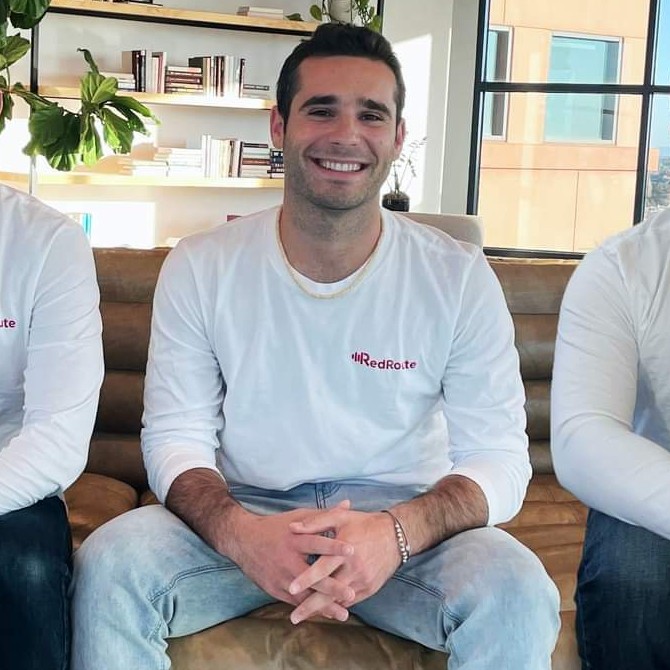
Brian Schiff
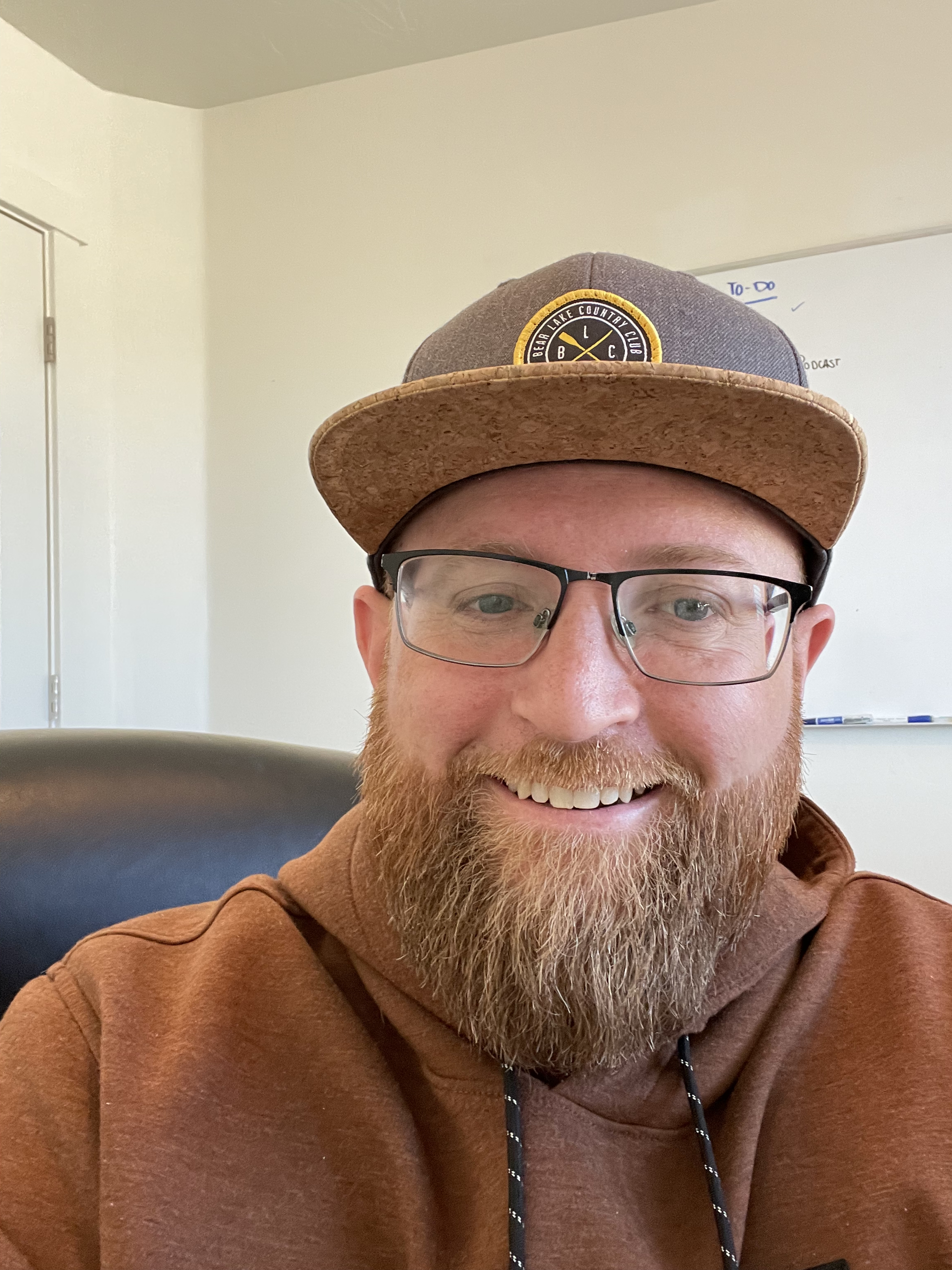
James Gilbert
Today's Guests

